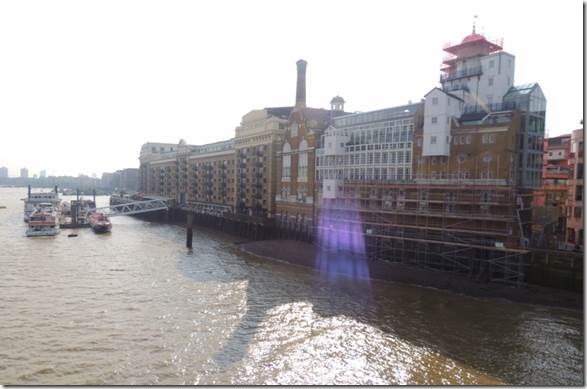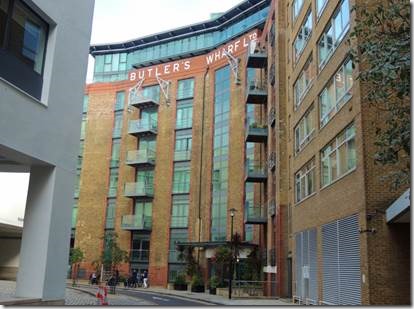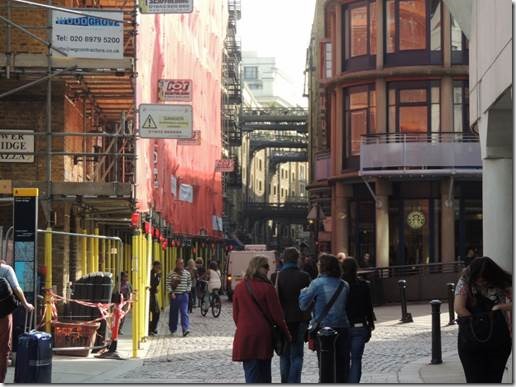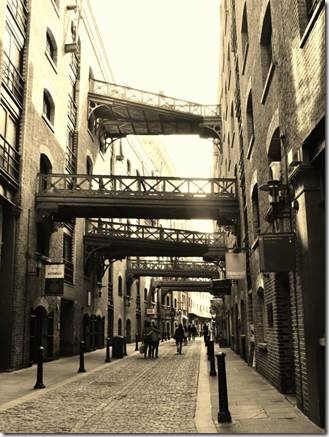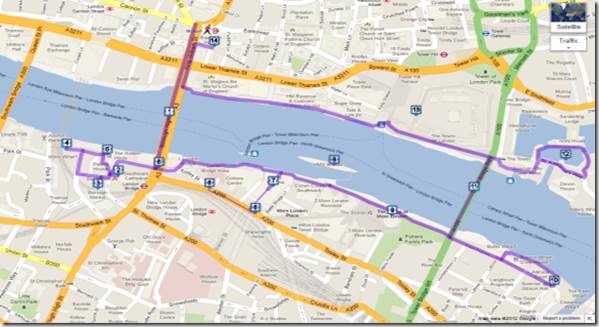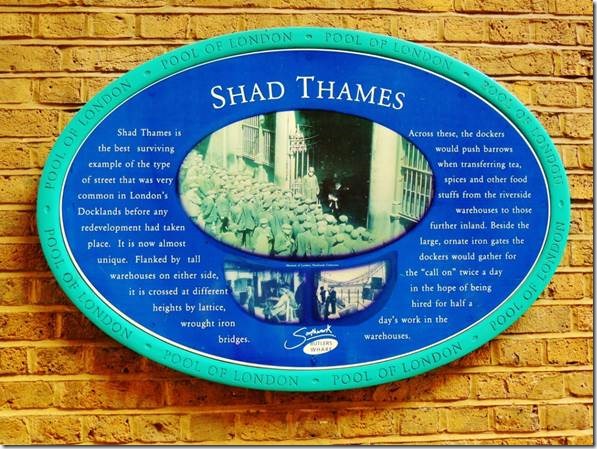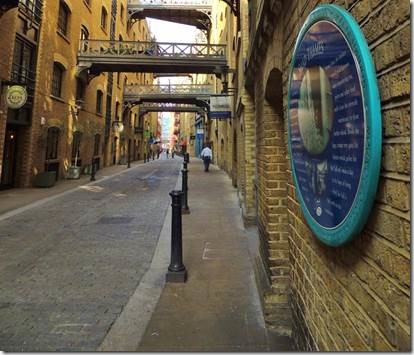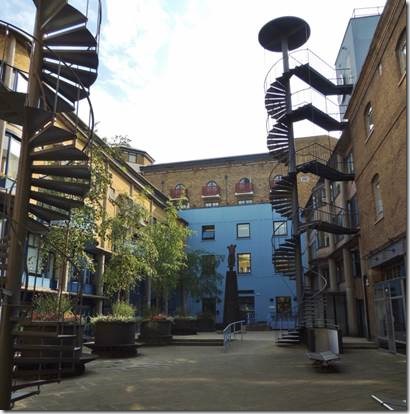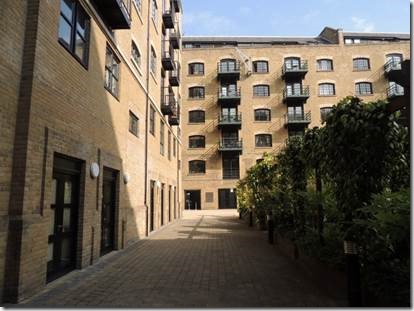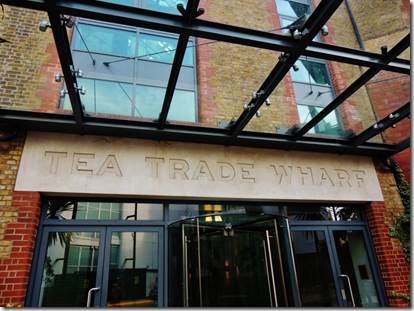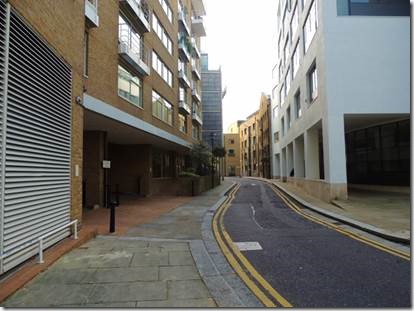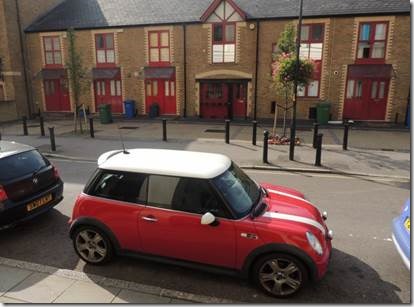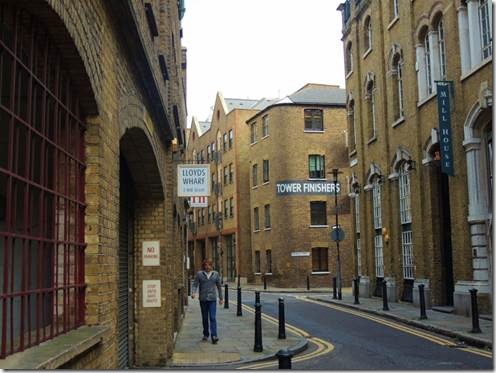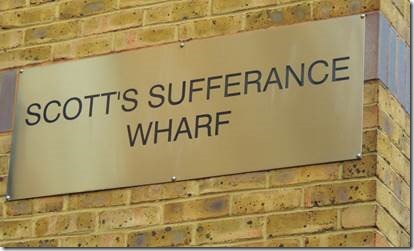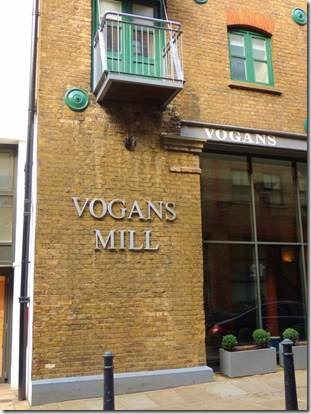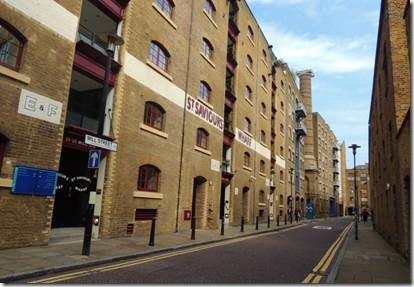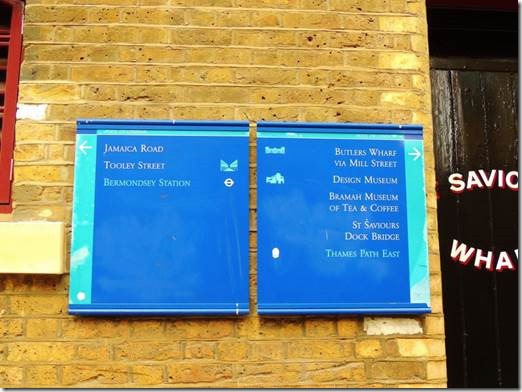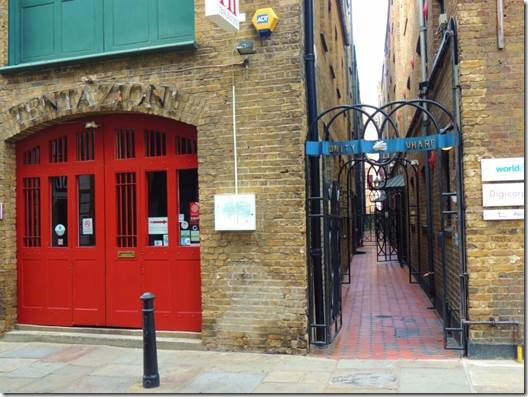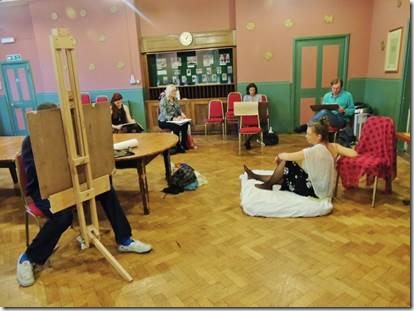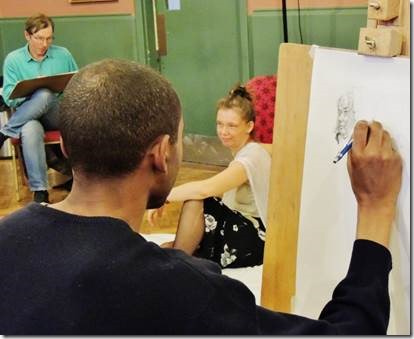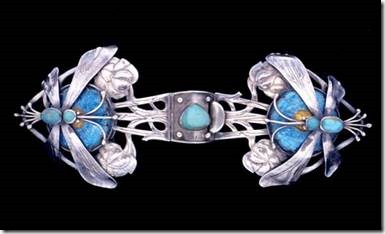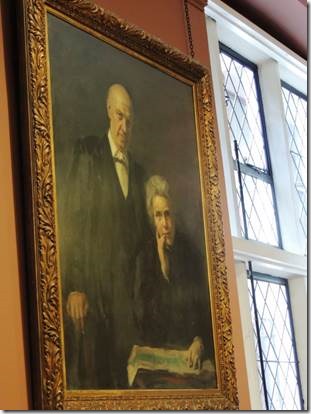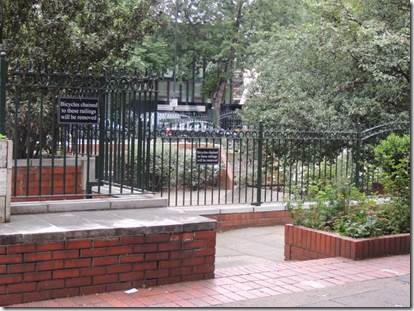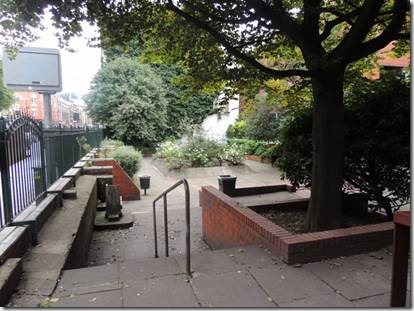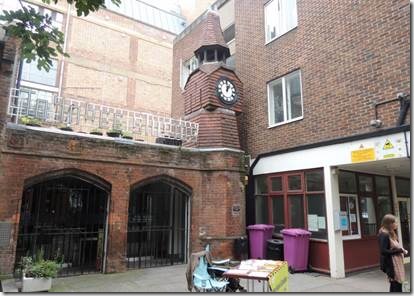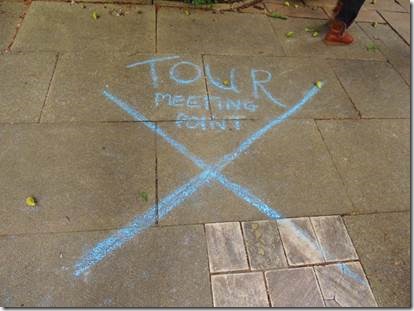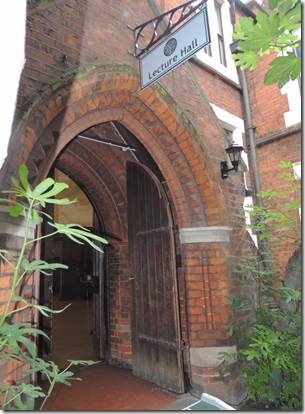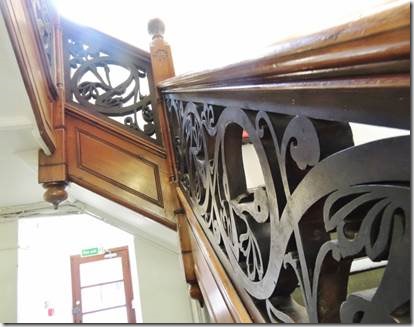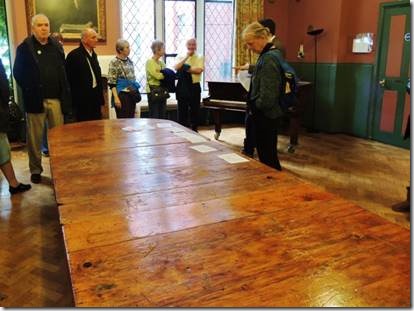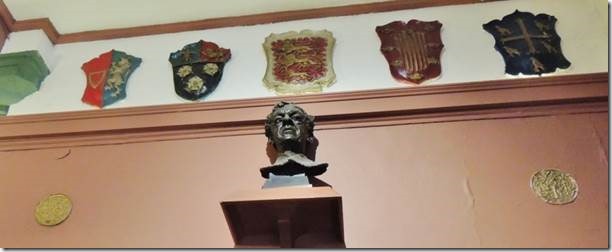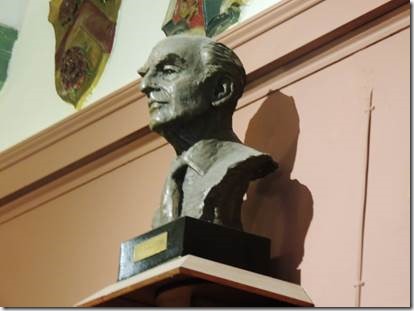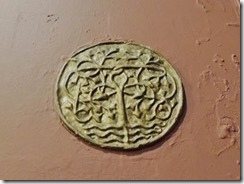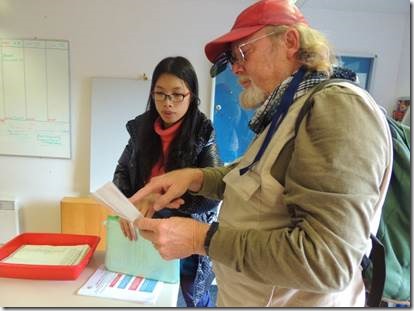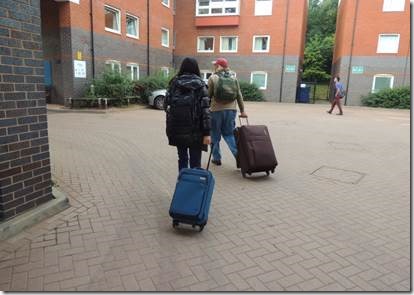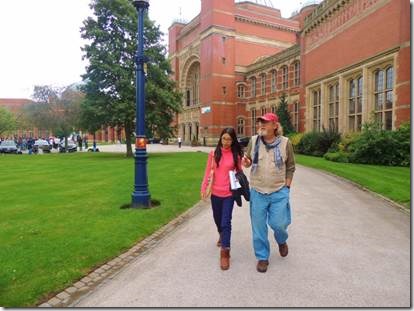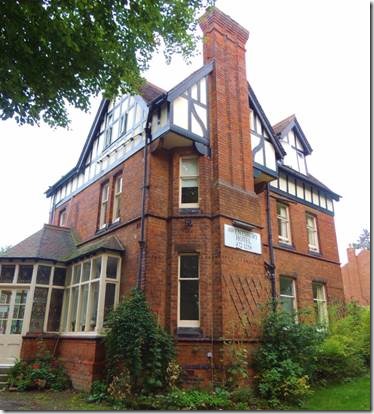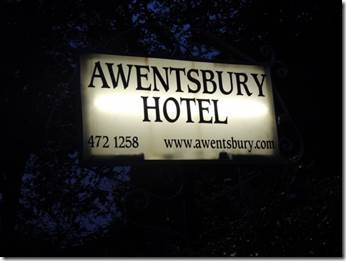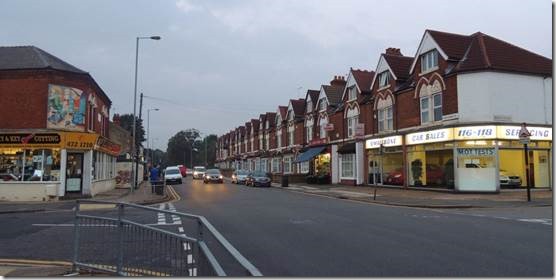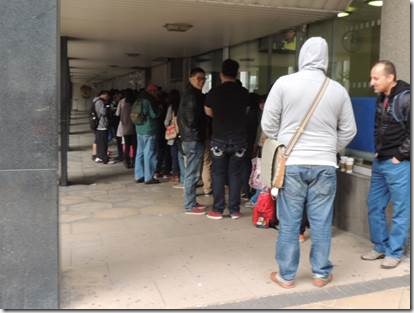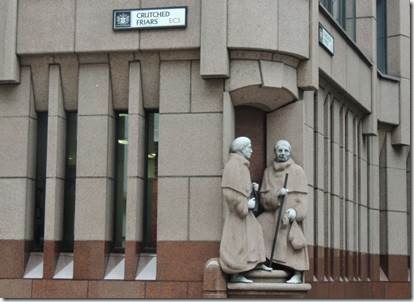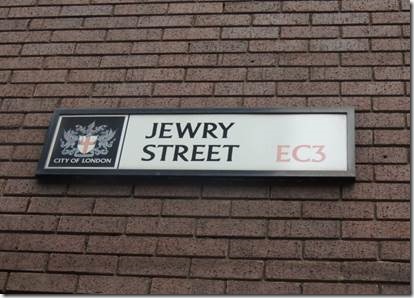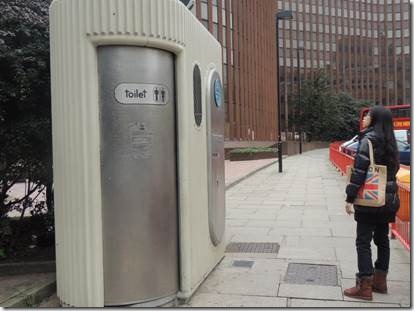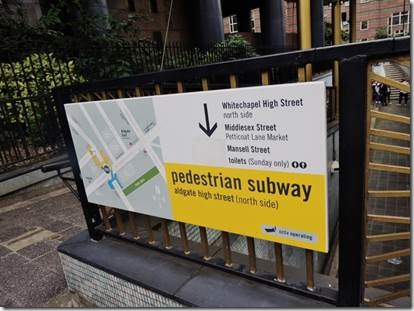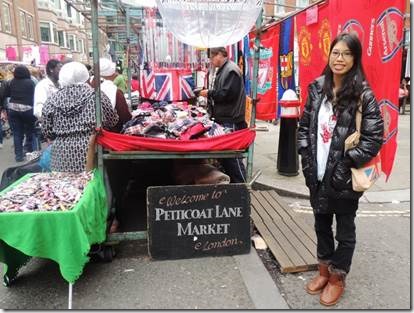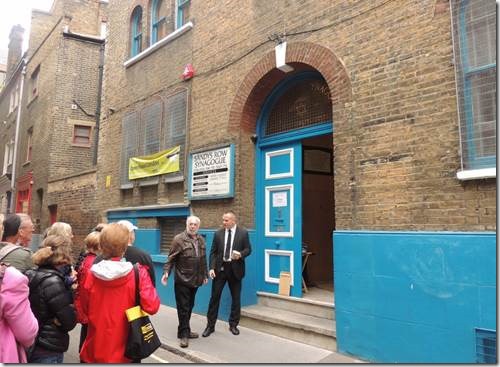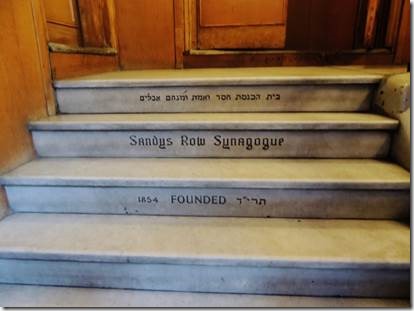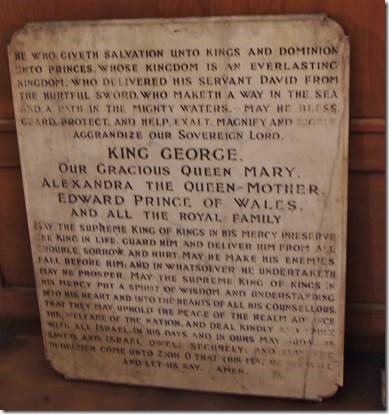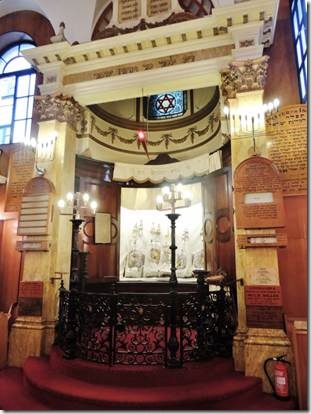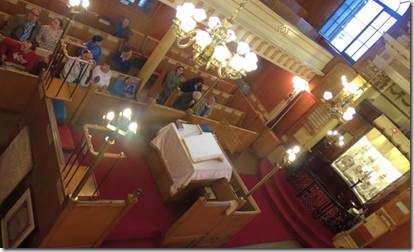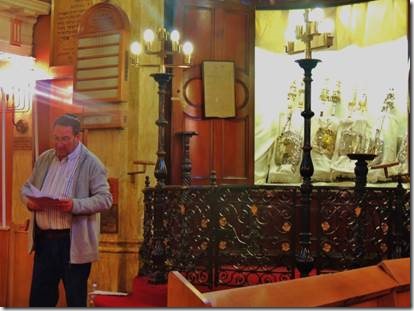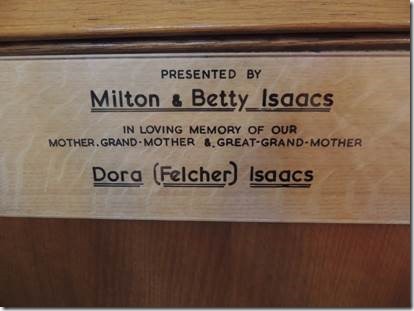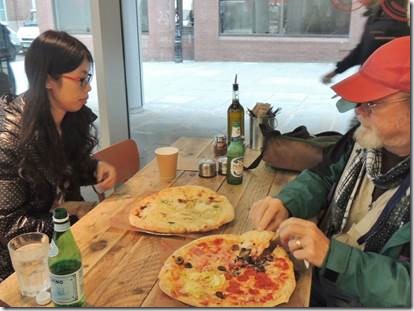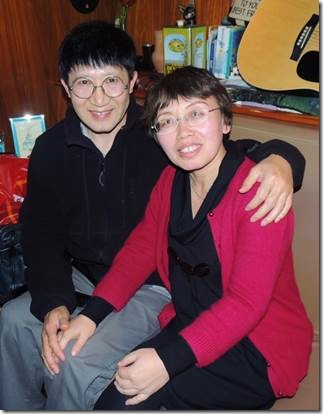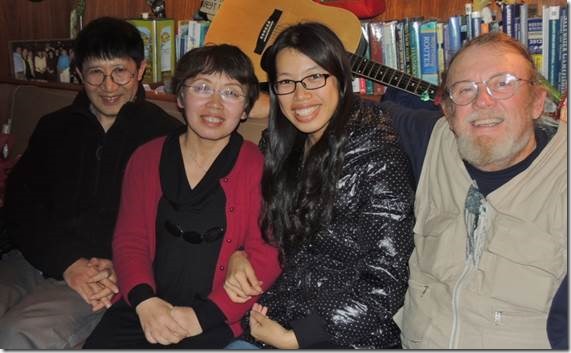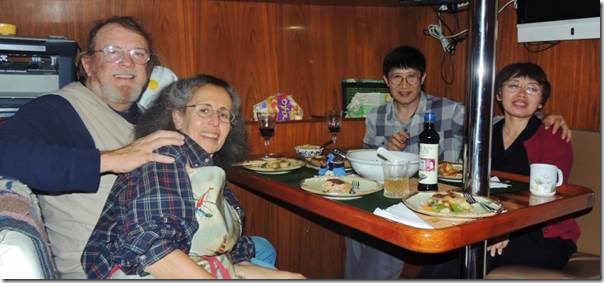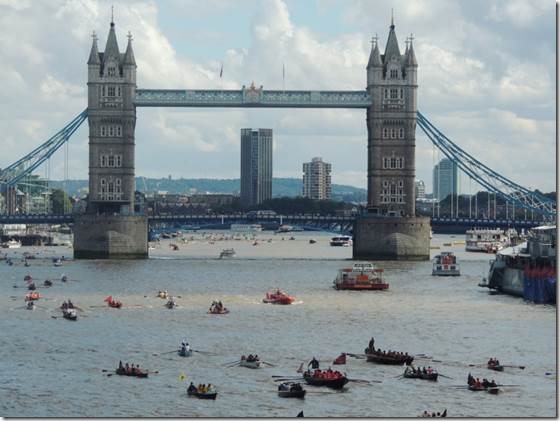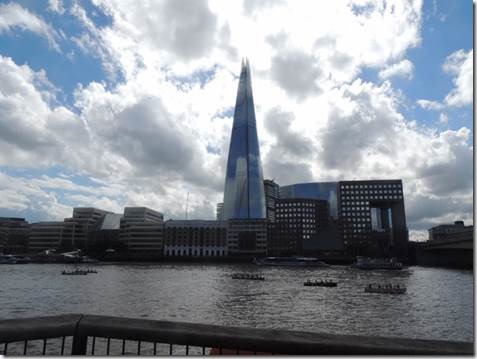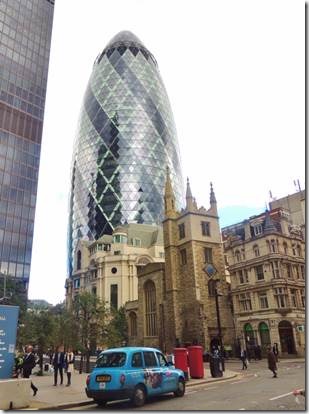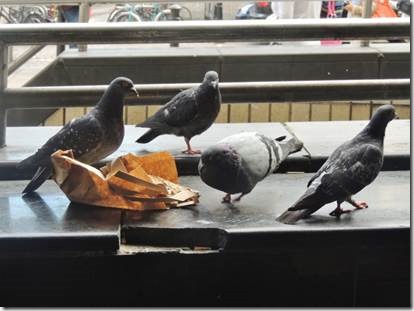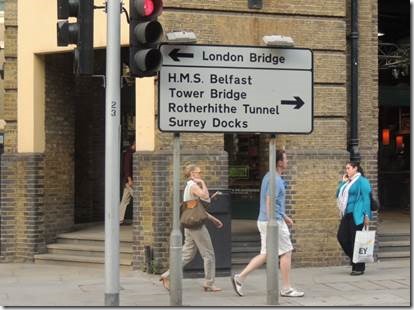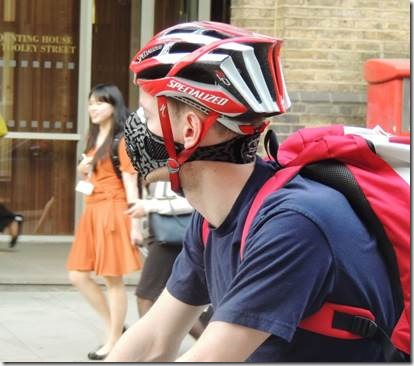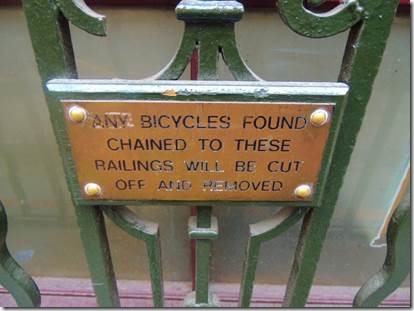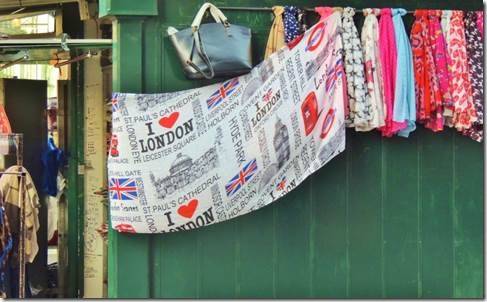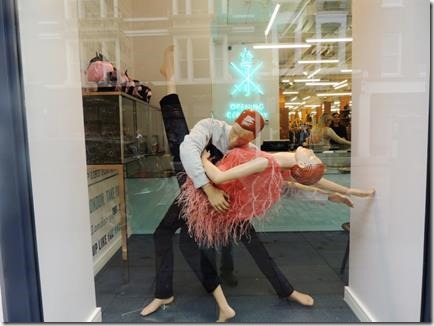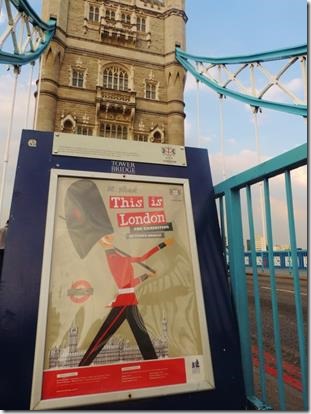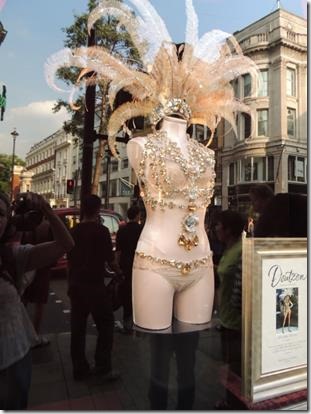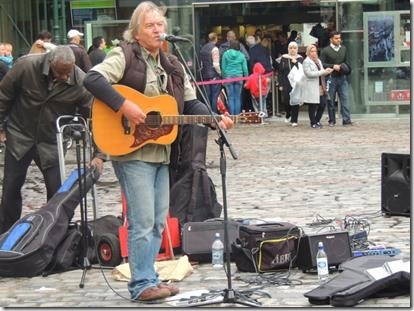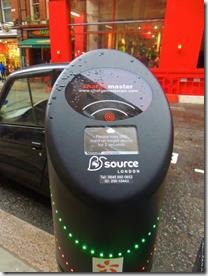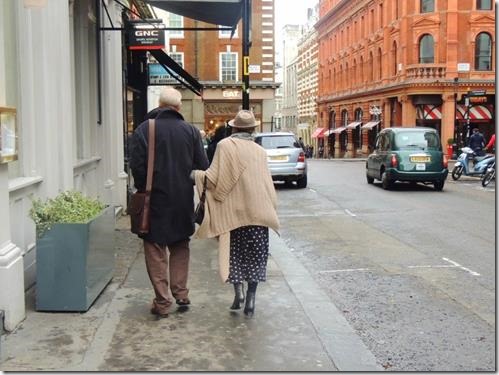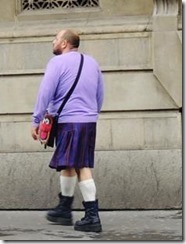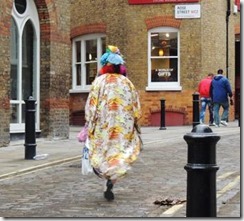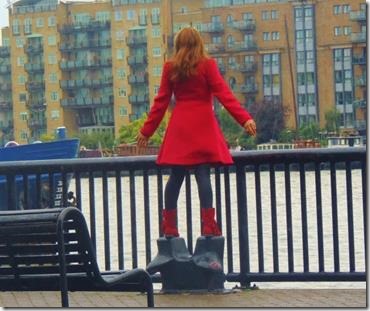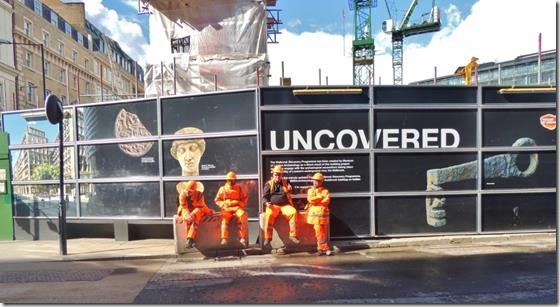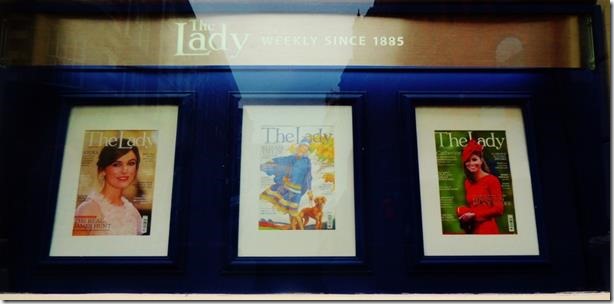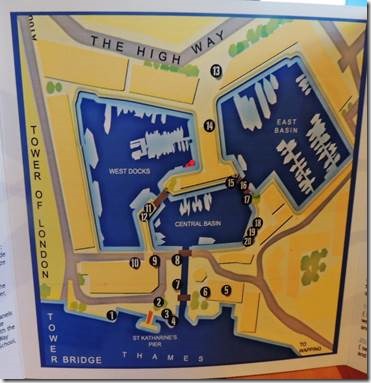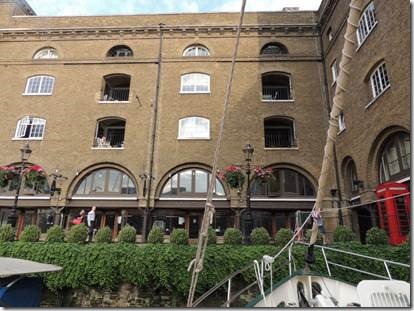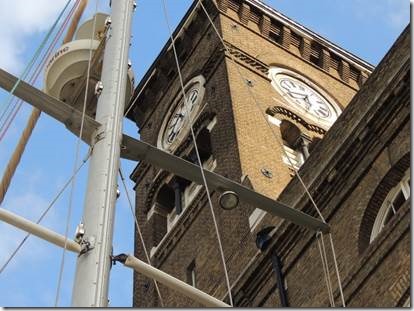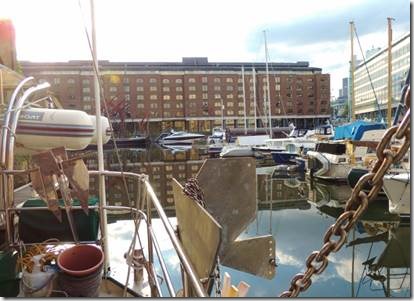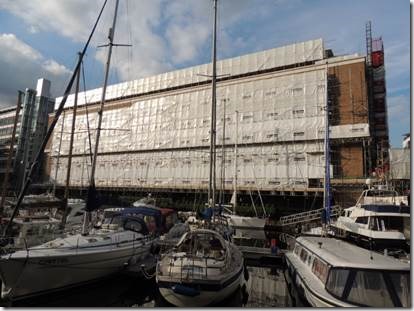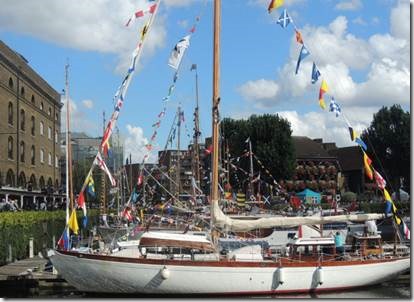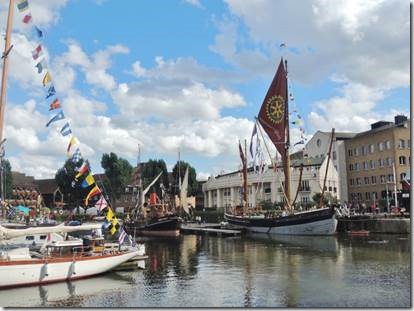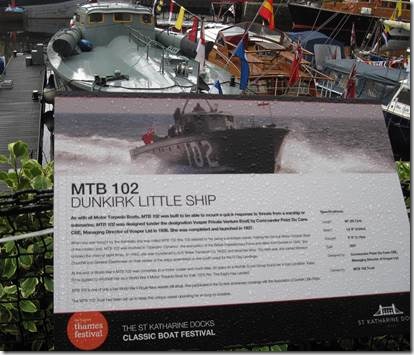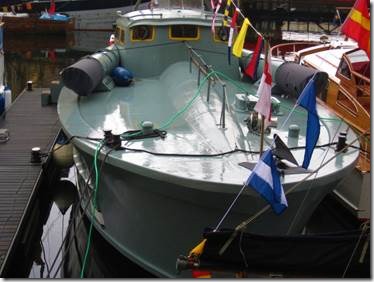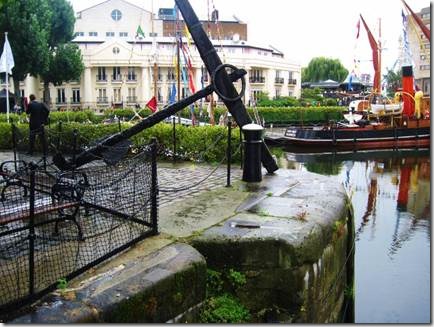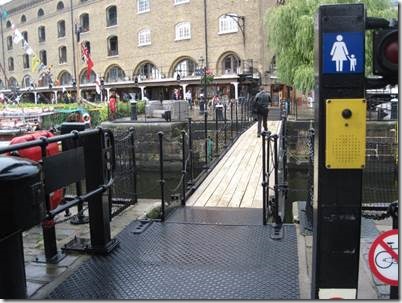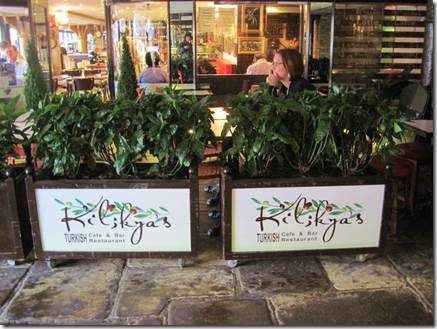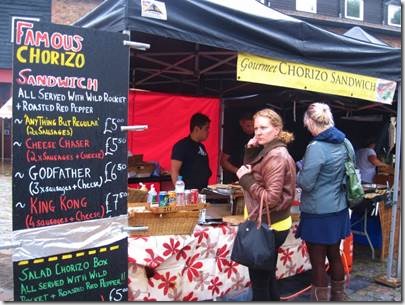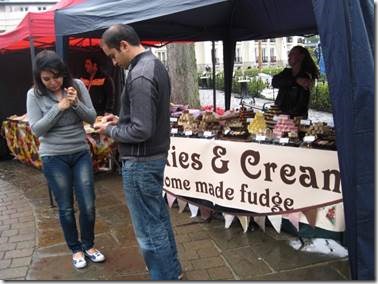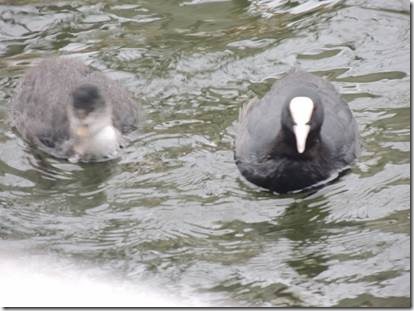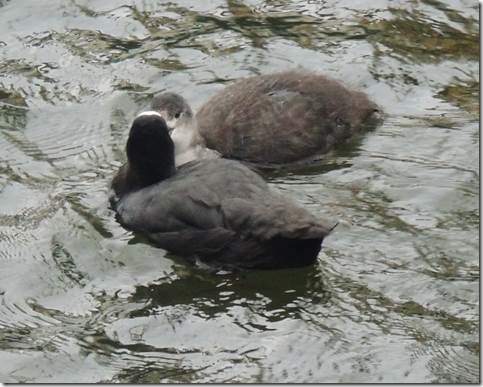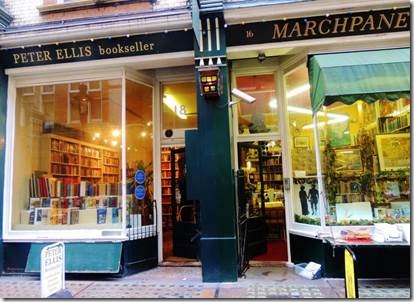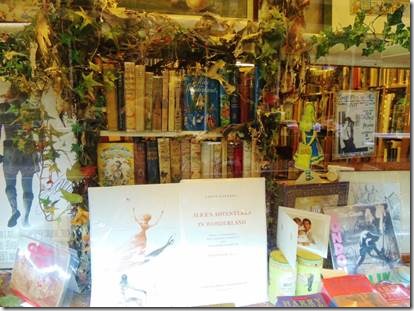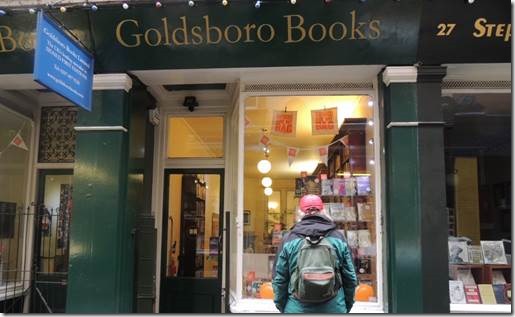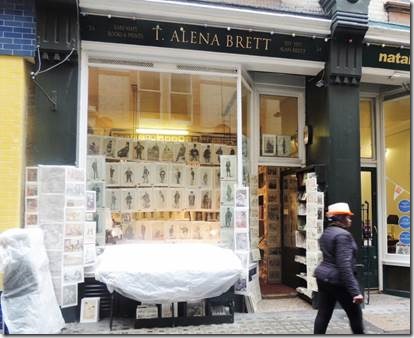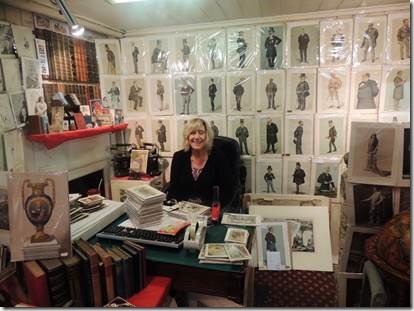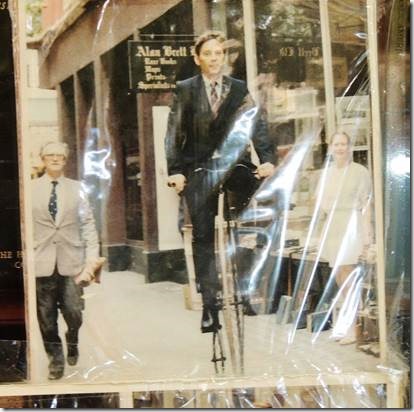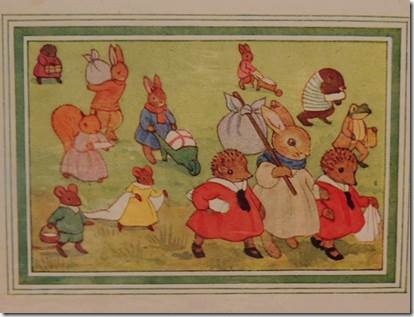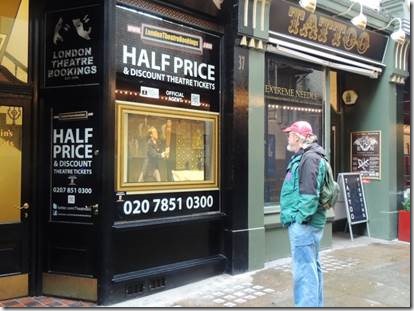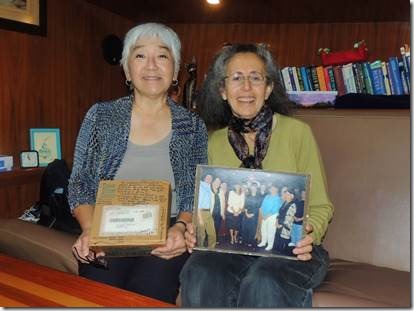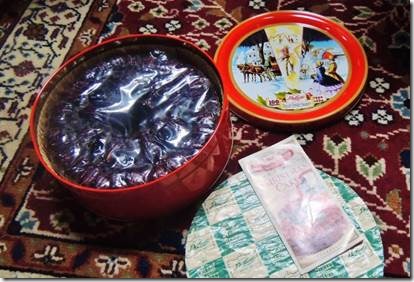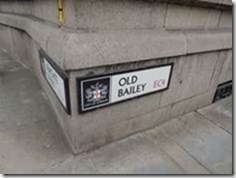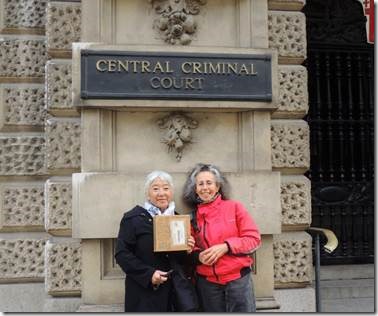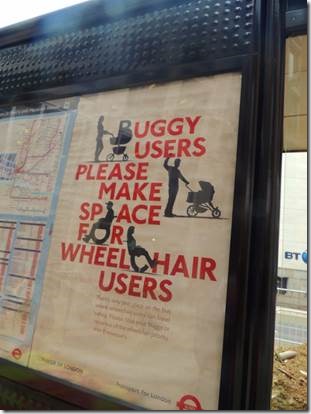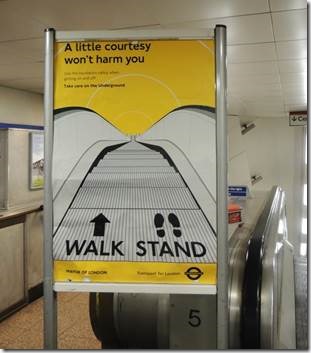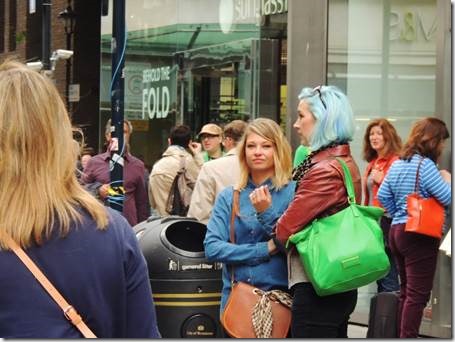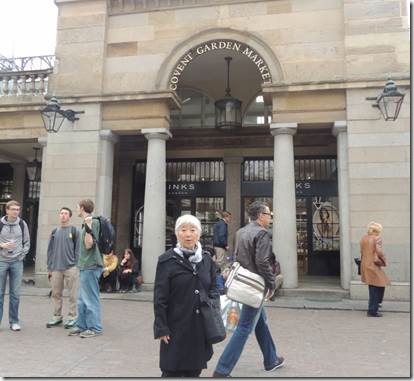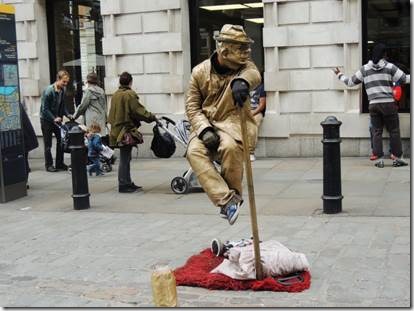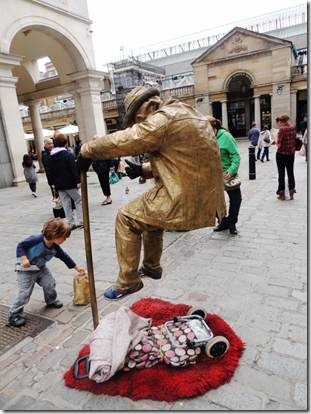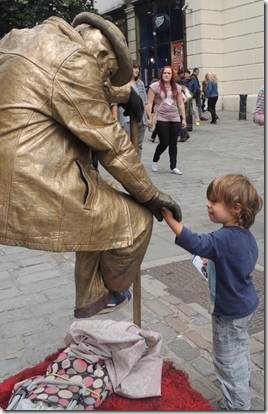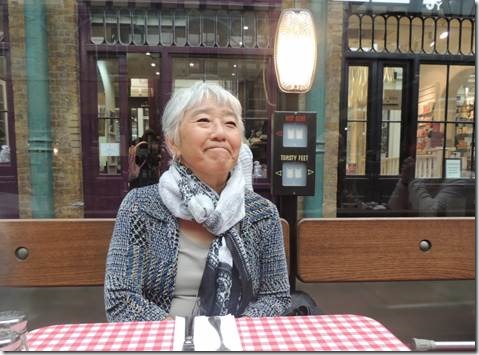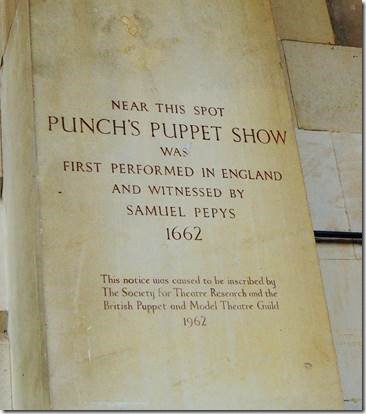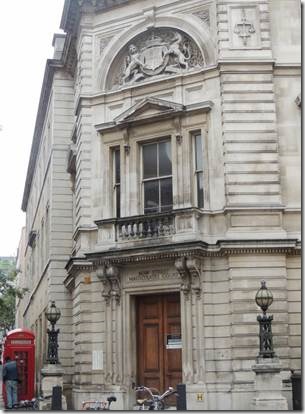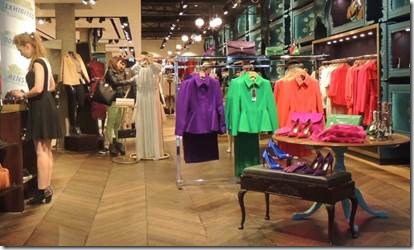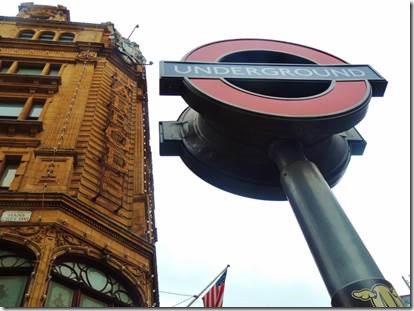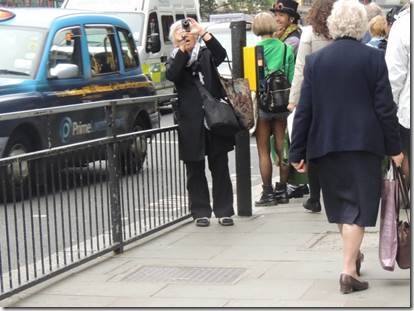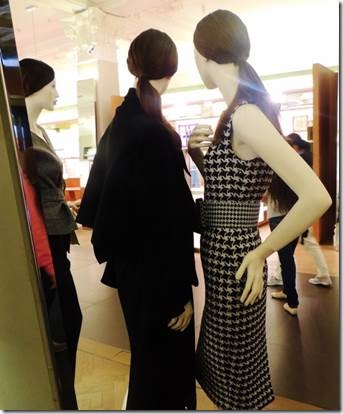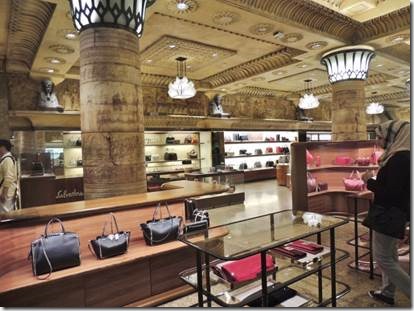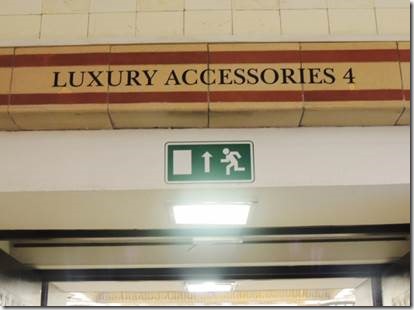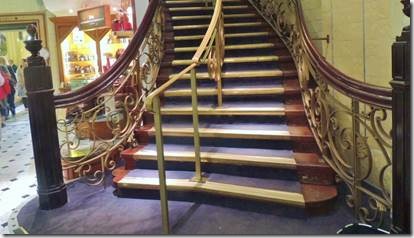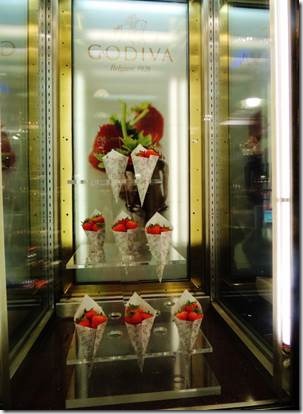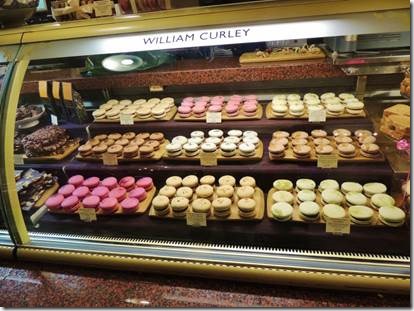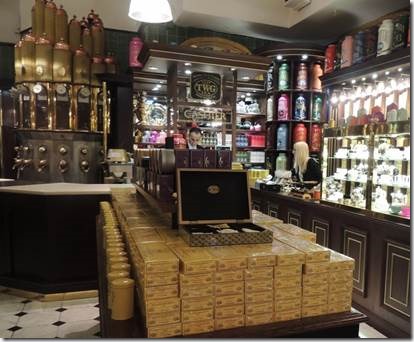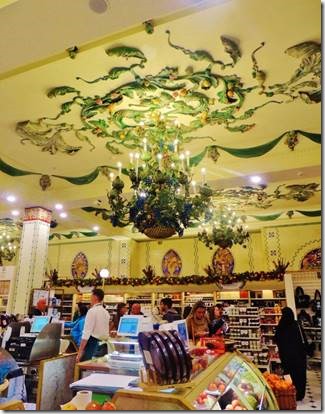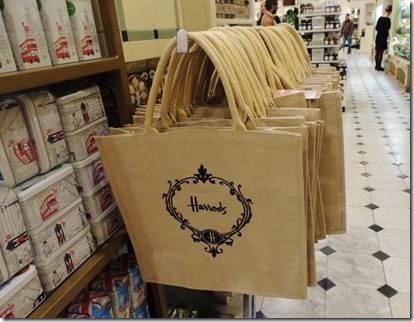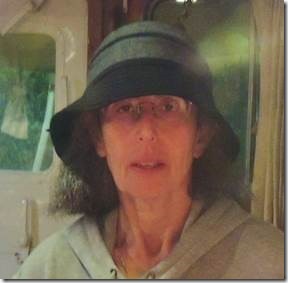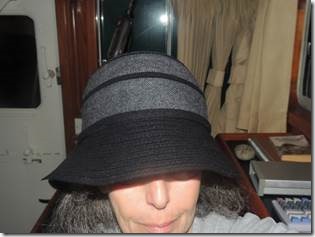Cheers,
Some of my favorite walking places are along the river passing the old wharves. http://www.whalingmuseum.org/ is a link to the New Bedford Whaling Museum. It describes the difference between a dock and a wharf and amazingly refers to St. Katharine’s Dock. “A dock is an enclosure or pool,, usually with a single aperture to allow waterborne entry and egress. Often the aperture had a watertight gate or lock to restrict access, or to regulate water levels against currents or tides. This provided a safe haven from stormy seas, turbulent waters, harbor traffic, and intrusion, and could isolate cargoes for customs purposes and provide security against theft. The most characteristic examples, constructed primarily of dressed stone, are perhaps those in the East End of London, where St. Catherine’s Dock has been converted to a tourist attraction with boutique shops; and at Liverpool, where the Merseyside Maritime Museum has preserved the Albert Dock as an historical monument.” I think my attraction to the old brick wharves and cobbled streets comes from having grown up in New Bedford and also from all of the recent visits back to see friends. Wharves and docks feel like home, not from our cruising, but from my childhood. Also, the history is so fascinating! To see Spice Wharf along the Thames and then think back to the spices being loaded on the crowded streets of India, so much easier to understand geography and history when you can walk along the same places. Much more interesting to me than kings and queens and generals.
Anyway, here is the first “docks and wharves” email. I have several more to go starting at the Tower and continuing to Rotherhithe home of the Mayflower Pub; oldest on the Thames so they claim and a boarding place for the Mayflower captain and crew. We’ll have to visit; maybe for Thanksgiving and find out the real story. The path along the Thames goes further but Rotherhithe is as far as we’ve gone so far.
Ru
Thames Dock Wharf: south side
The history of Shad Thames and Butlers Wharf
06/03/2010
“Shad Thames Fields, warehouses and riverside living
The riverside area of Shad Thames by Tower Bridge is overloaded with history, from medieval knights and open fields through to the iconic narrow cobbled streets of warehouses and wharfs. Much of the area was grazing land and open fields, even as late as the 19th century, until the enormous development of warehouses and docks established the area as the centre of the biggest industrial port in the world. After the decline of shipping in the Pool of London, the old warehouses became dream studio spaces for artists. Today, the warehouses have transformed once again and the converted flats are now some of the most sought after in London.
Horses and knights (and why it’s called Shad Thames.)
The street ‘Horselydown Lane’ is one of only a few small hints to the early history of the area, when it was literally grazing land for horses and cattle… ‘horsey down’. After the Norman Conquest in the 11th century through to the 15th century, the area close to Shad Thames was a priory for the Knights of St John. It slowly transformed into St John at Thames and then ‘Shad Thames’. Throughout the 16th and 17th centuries, this now busy riverside area remained quiet farming land described as a ‘country village’. It was only in the middle of the 17th century that a small number of houses began to appear along the river.
Porters at Butlers Wharf London’s larder
As industry along the Thames began to grow, so did the building of housing and warehouses and it was during the early to mid-19th century that fields made way for narrow cobbled streets and tall warehouses. The new warehouses gave the area the name ‘London’s larder’ as every variety of food was transported to London from around the world. It is believed that the warehouses in Bermondsey were responsible for three-quarters of London’s imported provisions.
Dickensian London
The now familiar design of tall warehouses with narrow surrounding streets was simply brought about by the need to maximise the use of the space by the river. It also made the use of catwalks and bridges, running from the river back through numerous warehouses, much easier. However, these narrow streets with industrial buildings made for a rough area and it literally became what we would call ‘Dickensian London’ – St Saviours Dock was in fact the inspiration for Bill Sikes’ den in Charles Dickens’ Oliver Twist.
Butlers Wharf Butlers Wharf
Butlers Wharf is the largest wharf building along the Thames and has almost reached iconic status sitting by the riverside adjacent to Tower Bridge. Viewed from the opposite side of the river, it dominates the view of the Southbank along Shad Thames. The name is believed to originate from a Mr. Butler, who traded in grain and first settled in Bermondsey in the late 18th century. However, the large warehouse we know today was completed in 1873 and designed by James Tolley and Daniel Dale. It was the latest in industrial design, featuring fireproof floors, brick-vaulted basements and wrought iron roof trusses. Butlers Wharf specialised in tea from India and Ceylon, with 40,000 chests arriving in a year, as well as dealing in cocoa, coffee and sugar.
Artists’ colony
The 1960s and 70s brought drastic change to London’s riverside docks, with the development of containerisation and changes to the way wharfers were employed, the wharfs and warehouses slowly began to close. However, the empty warehouses became ideal for artists and artisans, who not only needed cheap accommodation, but large studio space with good lighting. Artists such as David Hockney and Andrew Logan soon took over the derelict spaces and were part of a thriving creative community.
Warehouse living
However, as Shad Thames and the riverside had seen much change in previous decades, so again, it moved forward and the warehouses were converted into luxury apartments. In the 1980s Butlers Wharf was sold to Terence Conran for redevelopment, along with five other warehouses, which were completely redeveloped and renamed in honour of the former trade goods – Cardamom, Clove, Cinnamon, Nutmeg and Coriander.
Today, the converted warehouses in Shad Thames and the surrounding streets are some of the most sought after in London. High ceilings and large open ‘loft style’ living add to the enticing location by the river, close to the centre of London.
* Chesterton Humberts have a number of apartments available for sale in the Shad Thames area:
Dockhead Wharf – 1 bedroom £412,500
Admirals Court – 2 bedrooms £649,950
* Black and white images are ‘courtesy of English Heritage National Monuments Record’
http://backehansen.homesandproperty.co.uk/
|
Butler’s Wharf from the Tower Bridge Across the Thames from Butler’s Wharf is St. Katharine Docks |
|
Butler’s Wharf street side |
|
Just a few steps from the Tower Bridge begins the Shad Thames cobbled way. |
|
Pool of London Area called the Pool of London between London Bridge on the left to just below Tower Bridge on the right. SKD is the loop on the north side of the river to the right of Tower Bridge. Butlers Wharf is oblong across from SKD on the south side of the river http://www.walklondon.com/london-walks/pool-of-london-walk.htm |
|
POOL OF LONDON WALK The Pool of London is the stretch of the River Thames from London Bridge to just below Tower Bridge. In existence for over 1000 years with trading on this part of the river dating back to roman times it is why London grew into one of the world’s major cities. Starting and finishing at the Monument underground station our self-guided walk takes you across London Bridge, through ancient passage ways and paths to Tower Bridge and beyond. Returning via the Tower of London you will walk past beautiful riverside buildings and through historic markets to top tourist attractions and museums. Many of the original wharfs still remain, converted into shops, restaurants, cafes and bars making the Pool of London an ideal place to walk, rest and relax. http://www.kimslater.com/tag/shad-thames/ has some passages from Dickens connected to the area. |
|
Wharf flats (apartments) |
|
Tea Trade Wharf |
|
Not just one row along the water but streets of wharf areas. |
|
A Mini-Cooper in front of some more individual housing in the area. |
|
Sufferance Wharves…. The legal quays After Elizabeth I became queen in 1558, a royal act created the ‘legal quays’. These were trading wharves between London Bridge and the Tower. The legal quays had a monopoly on the landing or loading of dutiable goods – goods on which taxes had to be paid. The sufferance wharves As trade continued to expand, the legal quays eventually became too congested to cope. While the wharfingers – the people who owned the wharves – prospered, the ship owners lost money because of delays. One concession to the ship owners was the creation of the so-called sufferance wharves on the south side of the Thames. These had the same rights as the legal quays, but only on a temporary basis – hence ‘on sufferance’. Even with these, the river was still too congested. Pressure from the ship owners continued until the first enclosed docks were built in the early years of the 19th century. |
|
Vogans Mill Wharf and St. Saviours Wharf “(Vogans Mill) The business commenced around 1815 near to the old Hays Wharf, Bermondsey in the Pool of London, nearly opposite the Tower. The principal trade as far as been ascertained at that time, was importing oats for cleaning and milling for the considerable horse population of London. Most of the oats would have come from Finland and the Baltic States area. Around 1840 the sites alongside St. Saviours Dock were being redeveloped and the business moved to Mill Street. Vogans Mill was built slightly earlier than the adjacent wharves. It has been found that the pillars supporting the floors were of wood whereas, for example, in St. Saviours Wharf and New Concordia Wharf these are of cast iron. It was just at this time that this material started to be incorporated into buildings. St. Saviours Dock has a history all of its own. Originally it was part of the Neckinger River that flowed into the Thames and for over 250 years has been one of the "lost rivers" of London. It was originally called Savory Dock and Savourys Dock. The river also served the needs of the considerable tannery industry in Bermondsey. |
|
So much to see…. |
|
Unity Wharf Mill Street…home of Encyclopaedia Britannica Digital Encyclopædia Britannica (UK) Ltd 2nd Floor, Unity Wharf, Mill Street, London SE1 2BH, United Kingdom |
John Butler Butlers Wharf
On the south bank of the Thames immediately east of Tower Bridge (and therefore opposite St Katharine’s Dock) lies Butlers Wharf. Once it was a complex of wharves and warehouses that was part of the Port of London docks complex. Then, along with the rest of the docks, it fell into decline. The mean, dilapidated lanes within the complex enjoyed brief fame as a Dr Who film set during the early eighties, but after the departure of the Daleks the developers moved in and began the transformation of the wharf into an imaginative mix of apartments, offices, restaurants and leisure facilities. At the time of writing most of the refurbishment is complete.
A central piazza is the main focal point of the complex. A riverside walk has also been opened up, part of the Thames Path from the Greenwich flood barrier up to the source in Cricklade, Gloucestershire. The main road though the wharf, the strangely-named Shad Thames, still features the overhead goods gantries that once linked the warehouses together.
Recently opened within the complex are the London Design museum and the adjacent Tea and Coffee museum. The Wharf complex is bounded to the east by the sinister tidal inlet of St Saviour’s Dock, beside which stands New Concordia Wharf. This building has now been converted into offices and apartments but, a century ago, Charles Dickens set Bill Sykes’s den here in "Oliver Twist".
http://www.jbutler.org.uk/London/Southwark/ButlersWharf.shtml
London SE1
Butler’s Wharf
Completed in 1873, Butler’s Wharf was once the largest warehouse complex on the Thames. Having remained derelict after closure in 1972 , this early SE1 development is perhaps best known for Terence Conran’s restaurants such as Le Pont de la Tour, where the Clintons and Blairs famously dined. The Wharf is also home to gastronomic delights such as the Butler’s Wharf Chop House, Cantina del Ponte, Bengal Clipper, Captain Tony’s Pizza & Pasta Emporium and Pizza Express. Conran’s acclaimed Design Museum also houses the Blue Print Cafe.
You will probably recognize the area’s main thoroughfare, Shad Thames, from countless photographs and films of London’s gloomy docks in years gone by (there are some good photos of the area in the 1970s on this site). The distinctive iron bridges in Shad Thames were once used for moving goods from warehouse to warehouse and have been retained as part of the redevelopment.
Shad Thames is a corruption of St John at Thames, a reference to the Knights Templar who once controlled the area.
Butler’s Wharf is best approached on foot along the riverside walk.
St Saviour’s Dock, the eastern limit of SE1’s riverside, was once the mouth of the River Neckinger – one of London’s lost rivers. The dock is no longer such an obstacle for walkers following the Thames Path since the addition of a footbridge across the mouth of the dock, which can be swung open to allow boats to pass. Most of the building around the dock were once mills.
http://www.london-se1.co.uk/areas/butlers.html
John Butler Butlers Wharf
On the south bank of the Thames immediately east of Tower Bridge (and therefore opposite St Katharine’s Dock) lies Butlers Wharf. Once it was a complex of wharves and warehouses that was part of the Port of London docks complex. Then, along with the rest of the docks, it fell into decline. The mean, dilapidated lanes within the complex enjoyed brief fame as a Dr Who film set during the early eighties, but after the departure of the Daleks the developers moved in and began the transformation of the wharf into an imaginative mix of apartments, offices, restaurants and leisure facilities. At the time of writing most of the refurbishment is complete.
A central piazza is the main focal point of the complex. A riverside walk has also been opened up, part of the Thames Path from the Greenwich flood barrier up to the source in Cricklade, Gloucestershire. The main road though the wharf, the strangely-named Shad Thames, still features the overhead goods gantries that once linked the warehouses together.
Recently opened within the complex are the London Design museum and the adjacent Tea and Coffee museum. The Wharf complex is bounded to the east by the sinister tidal inlet of St Saviour’s Dock, beside which stands New Concordia Wharf. This building has now been converted into offices and apartments but, a century ago, Charles Dickens set Bill Sykes’s den here in "Oliver Twist".
http://www.jbutler.org.uk/London/Southwark/ButlersWharf.shtml
Eagle Wharf : an example of a flat in one of the wharves
Eagle Wharf Court, London, SE1 – Leasehold / £799,000 http://www.cluttons.co.za/ (includes photos)
A beautifully refurbished two double bedroom warehouse conversion in the heart of Shad Thames with a terrace overlooking Tower Bridge Piazza.
Eagle Wharf has retained a variety of its original warehouse character, including exposed brickwork and cast iron window frames.
The apartment offers a spacious open-plan reception room leading to a large covered terrace with direct views out across the attractive Tower Bridge Piazza.
There is a fully fitted integrated kitchen, two double bedrooms and two bathrooms. Eagle Wharf benefits from day time concierge, one secure car parking space and lift access.
The development is located close to the river front and the large variety of bars and restaurants that the area has to offer.
London Bridge (Jubille line) and Tower Hill stations (District and Circle lines) are both close by.

